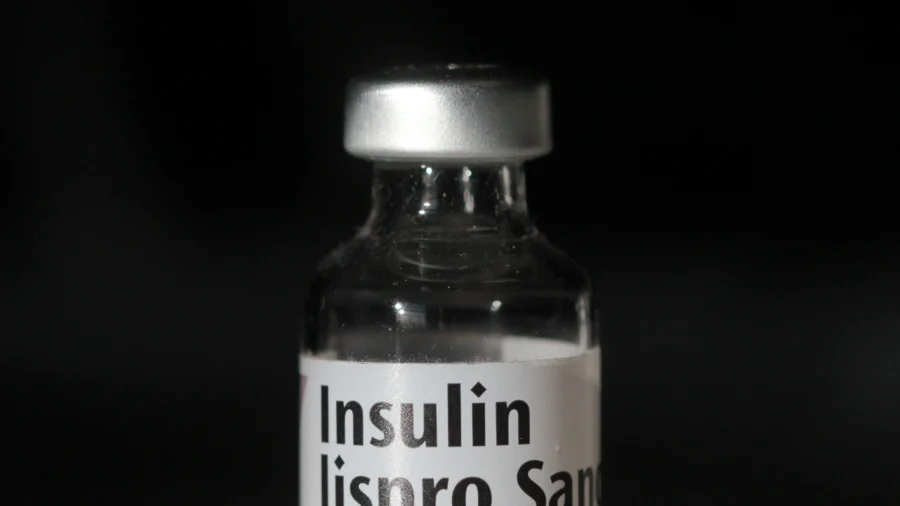More American citizens will be able to get insulin for affordable rates in 2024 as drug manufacturer Sanofi starts offering insulin products for $35 per month.
In March, Sanofi announced a cut in the price of its most widely prescribed insulin sold in the United States by 78 percent and launched a program to provide insulin for $35. These measures came into effect on Jan. 1, 2024. Sanofi has now joined other drug manufacturers like Novo Nordisk and Eli Lilly to offer insulin for $35, thus enabling more U.S. citizens to have access to affordable insulin. Eli Lilly, Sanofi, and Novo Nordisk are the three largest insulin manufacturers in the United States.
Novo Nordisk lowered U.S. prices of pre-filled insulin pens and vials in March, which also came into effect this year. Price reductions of insulin products from Novo Nordisk and Sanofi are as follows:
- Sanofi: The company’s most widely prescribed insulin product Lantus will see a price cut of 78 percent. Sanofi also set up a “$35 cap on out-of-pocket costs for Lantus for all patients with commercial insurance.”
- Novo Nordisk: Legacy insulin brands NovoLog and NovoLog Mix 70/30 will see a price reduction of 75 percent. Levemir and Novolin will see a price cut of 65 percent. In September, the company launched its MyInsulinRx program which offers a 30-day supply of insulin for $35 to qualified patients.
Last year, Eli Lilly instituted a $35 automatic cap on out-of-pocket costs for its insulin items for people with commercial insurance at participating retail pharmacies. It also announced a 70 percent price cut on its most commonly prescribed insulin products.
The decision of insulin manufacturers to reduce prices came as a major change to Medicaid kicked in at the beginning of this year.
The Medicaid program requires that drug manufacturers pay rebates when drug prices are raised at a higher rate than inflation. The price of insulin has been raised so much that the rebates would actually exceed the cost of drugs. However, since the rebate was capped at 100 percent of the drug’s list price, rebates were never a major issue for insulin manufacturers.
The 2021 American Rescue Plan Act removed the cap on rebates, a decision that came into effect on Jan. 1, 2024. As such, manufacturers who raised drug prices too much compared to inflation may have to pay rebates exceeding the cost of the drug.
An analysis by the health care news portal STAT estimates that removing the rebate cap would have forced Eli Lilly to pay Medicaid around $150 per vial of insulin if it did not reduce the price. The same situation prevails for other manufacturers as well.
In an interview with CNN, Spencer Perlman, director of health care research at consulting group Veda Partners, said that Eli Lilly could avoid having to pay an additional $430 million in rebates under Medicaid this year by cutting list prices of insulin products Humalog and Humulin.
Moreover, the company can also gain an extra $85 million in profits from the program due to the structure of the rebate formula, he added.
Sanofi can avoid $560 million in rebates and make an extra $200 million profit from its insulin product Lantus. Novo Nordisk can save $350 million in rebates and make almost $210 million from its insulin offerings NovoLog and Levemir, Mr. Perlman stated.
Lowering Insulin Costs
In addition to the rebate issue, there are also other factors why insulin manufacturers in the United States have decided to slash prices, one of them being upcoming competition.
In March 2022, non-profit generic drugmaker Civica Rx announced a plan to manufacture and distribute low-cost insulin. The nonprofit aims to manufacture three insulin products—Glargine which will be interchangeable with Sanofi’s Lantus, Lispro which is interchangeable with Eli Lilly’s Humalog, and Aspart for Novo Nordisk’s Novolog.
“Civica will co-develop and manufacture the drug product, complete the clinical trials, and file the necessary applications for FDA approval. Civica plans to set a recommended price to the consumer of no more than $30 per vial and no more than $55 for a box of five pen cartridges,” the nonprofit said at the time.
The drugmaker is currently working towards this price offering.
Another factor is that insulin manufacturers started coming under scrutiny from lawmakers over high insulin costs. In November 2022, Texas Attorney General Ken Paxton launched an investigation into drug manufacturers and others involved in the trade due to high insulin prices.
“Texans today are made to choose between buying groceries to feed their families and paying sky-high prices for a life-saving drug that’s been estimated to cost around two dollars to make,” Mr. Paxton said at the time.
In April last year, Senate Health, Education, Labor, and Pensions (HELP) Committee Chairman Bernie Sanders called the CEOs of Eli Lilly, Novo Nordisk, and Sanofi to testify during a hearing titled “The Need to Make Insulin Affordable for All Americans.”
According to the American Diabetes Association, more than 37 million Americans, or 11 percent of the total population, have diabetes. Out of this, 8.4 million rely on insulin to survive.
It calculates that “the total annual cost of diabetes in 2022 is $412.9 billion, including $306.6 billion in direct medical costs and $106.3 billion in indirect costs. People with diagnosed diabetes now account for one of every four health care dollars spent in the U.S.”
From The Epoch Times


